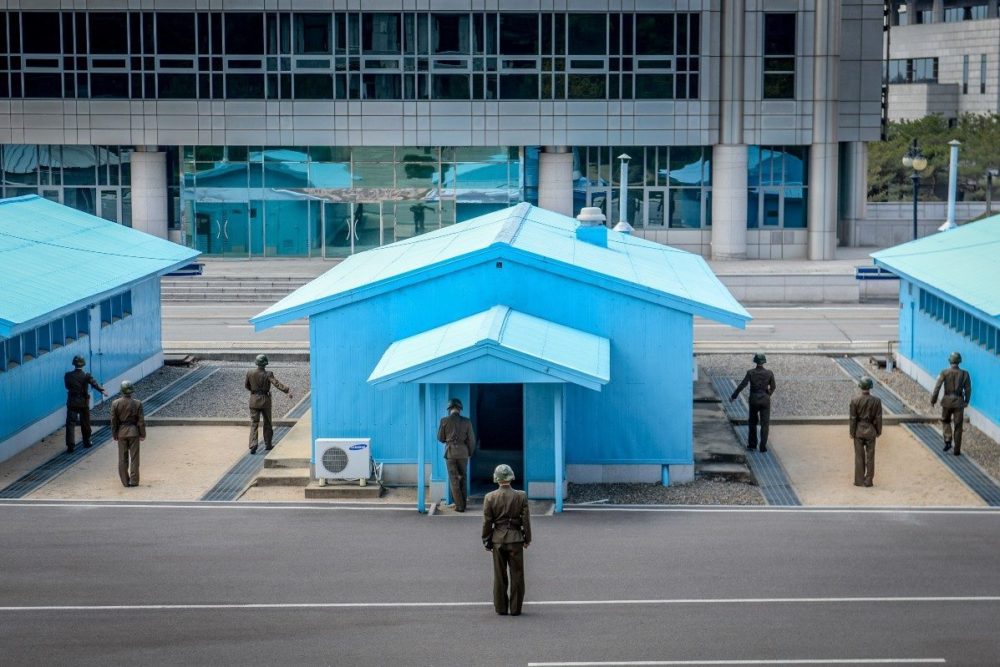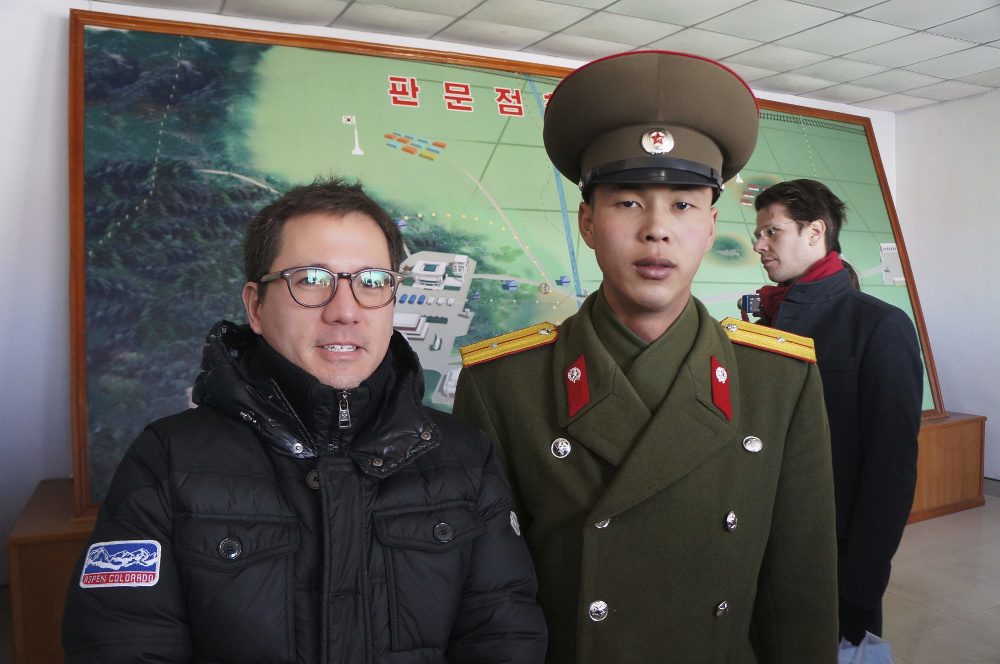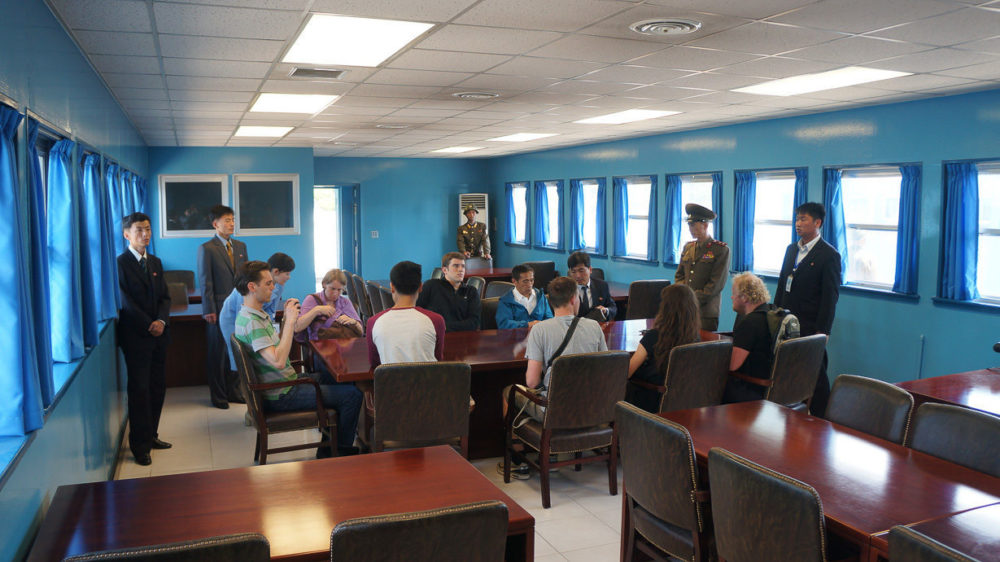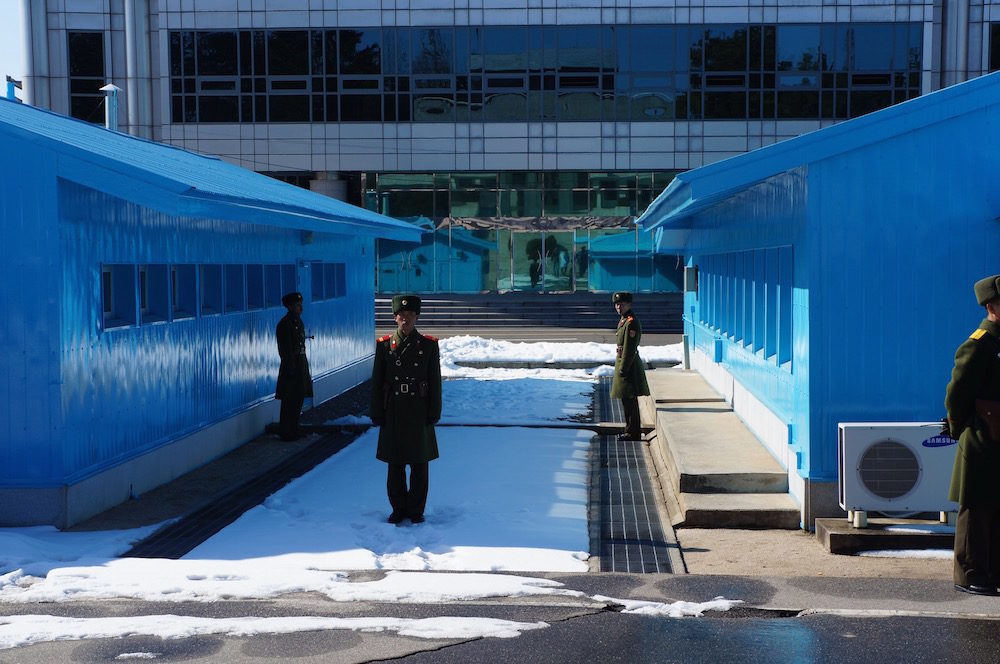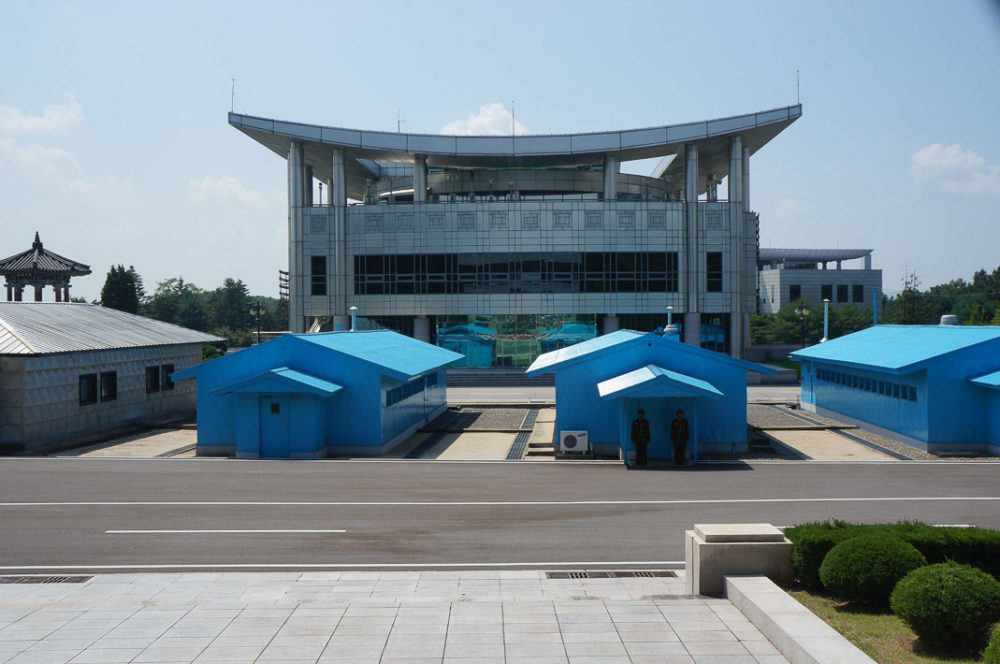Introduction
The Korean Demilitarized Zone (DMZ) is a buffer zone dividing the Korean peninsula which forms the de-facto border between North Korea and South Korea. The DMZ was established upon the signing of the Korean Armistice Agreement on July 27, 1953, ceasing fire in the Korean War. Despite its name, the DMZ is often referred to as the most militarised border on earth, heavily fortified and with soldiers stationed along both sides. The DMZ is 250 km (160 miles) in length and 4km (2.5 miles) in width, of which 2km is situated in each Korea. The Military Demarcation Line runs through the centre which serves as the actual political border.
Is the DMZ what divided the Korean peninsula?
No, it’s a common misconception to believe that Korea was divided by the introduction of the DMZ at the end of the Korean War in 1953.
The division between North Korea and South Korea occurred in 1945, when Japan surrendered at the end of World War II. At that time, Soviet forces took control in the North and American forces took control in the South. The 38th parallel was chosen as what was intended as a temporary border, an arbitrary line which divided the peninsula roughly in half, without consultation of any Koreans. The DMZ was formed when the Korean Armistice Agreement was signed, the border following the then Korean War frontline. The DMZ does not track the 38th parallel, instead intersecting it at an angle.
The city of Kaesong, part of the South under the 38th parallel and now part of the North under the DMZ, is the only major city to change hands as a result of the Korean War.
DMZ, Panmunjom, 'Truce Village' or Joint Security Area?
Many terms are used interchangeably to refer to the wider DMZ, particularly in foreign publications. Panmunjom was a village located inside what’s now the DMZ. Panmunjom became famous as the location of the negotiation and the eventual signing of the Korean Armistice Agreement, and hence became known as the ‘Truce Village’. Upon the signing, civilians inside the DMZ were relocated and Panmunjom was abandoned. Today, there’s no evidence of the original Panmunjom village besides the Armistice Talks Hall and Armistice Signing Hall which are preserved as museums.
The Joint Security Area, the most widely recognised section of the DMZ, is located on the actual political border, roughly 800m east of the original Panmunjom village. The Joint Security Area is what you’ve likely seen in mainstream media, where blue UN conference buildings straddle the Military Demarcation Line. Visitors are often permitted to enter and technically ‘cross’ the border within the confines of these buildings. The JSA is the only section of the DMZ where North Korean and South Korean soldiers stand face-to-face.
Why is there a Joint Security Area in the DMZ?
The Joint Security Area has historically served as the location of diplomatic meetings between North Korea and South Korea. It’s a safe access point into the DMZ to reach the Military Demarcation Line. After the Korean War, the JSA was where prisoners of war were exchanged, and in recent years, the JSA was where North Korean leader Kim Jong Un met with South Korean President Moon Jae In and United States President Donald Trump in 2018 and 2019 respectively.
Can you cross the DMZ?
No, outside of extraordinary (typically diplomatic) circumstances, nobody is permitted to cross the Korean DMZ. This means civilians cannot travel between North Korea and South Korea directly and must transit via a third country such as China or Russia.
What is inside the DMZ?
The Korean DMZ is uninhabited aside from two villages, Kijong-Dong on the northern side, and Daesong-Dong on the southern side, both in the proximity of the Joint Security Area. The Armistice Talks Hall and Armistice Signing Hall are located within the DMZ and are included on visits to the JSA.
The DMZ is otherwise a no-mans-land laden with minefields and tank traps marked by barbed wire and outposts patrolled by their respective militaries. Without human intrusion for decades, nature has reclaimed much of the DMZ, resulting in a wildlife reserve of endangered species including the red-crowned crane, Siberian musk deer, and the Asiatic black bear.
Is photography permitted at the DMZ?
Yes, photography of (or with) military is permitted in (but not leading to) the Joint Security Area and at the Concrete Wall further east along the DMZ. However, these are exceptions, and it’s otherwise not allowed to photograph soldiers, military installations, military checkpoints, and military vehicles in North Korea.
Does the DMZ extend into the sea as a maritime border?
No, the maritime border was not agreed upon in the Korean Armistice Agreement, meaning the DMZ and the MDL do not extend into the sea. The maritime border remains disputed, particularly on the West Sea, with North Korea declaring an ‘Inter-Korean MDL’ counter to the UN (and South Korea) recognised Northern Limit Line (NLL). The contested maritime border and proximity of South Korean islands to the North Korean mainland has resulted in naval skirmishes and incidents such as the bombardment of Yeonpyeong Island.
How do you get to the DMZ?
By Road: The DMZ is connected directly to Pyongyang by the 170km Pyongyang-Kaesong Highway, known as the ‘Reunification Highway’. This is a 2.5-3 hour drive with a stop at Sohung Rest Stop to purchase snacks and coffee. On the drive to the DMZ, it’s possible to detour through Sariwon, the regional capital of North Hwanghae Province, or Mt. Jongbang. All visits to the DMZ will head through Kaesong, a historic border city which changed hands from South Korea to North Korea as part of the Korean Armistice Agreement.
How do I include the DMZ in my itinerary?
The DMZ is a must-visit highlight on tours to North Korea. The DMZ is key to understanding geopolitics on the Korean peninsula, and it makes for a contrasting countryside drive from Pyongyang taking in regional cities. As a general rule, the DMZ is closed to visits on Saturdays.
Day trip: With an early start, day trips to the DMZ from Pyongyang are possible, and ideal for those on short itineraries. You’ll visit the DMZ including the Joint Security Area, sites in the city of Kaesong, and take a short detour to Sariwon. It’s an action-packed day and you can expect to be back in Pyongyang for dinner.
Overnight trip: Spend overnight in Kaesong’s traditional Minsok Folk Hotel and add a rural drive to the Concrete Wall, a fortified section of the DMZ to see military installations on both sides. Take a walk by Kaesong’s old town, and explore the UNESCO Mausoleums of past dynastic rulers of Korea.
Multi-night trip: Longer visits to the area are possible, but only recommended for special-interest groups of Kaesong and it’s ancient history as further sites won’t be DMZ-related. Tour a ginseng factory, discover lesser-visited Buddhist temples, and take in the local scenery at Pakyon Waterfall. As you return to Pyongyang, take a detour to Mt. Jongbang nearby Sariwon.
Where to stay in the DMZ?
It’s not possible to stay overnight within the DMZ. All visits to the area will stay in Kaesong at either the Minsok Folk Hotel or the Janamsan Hotel.

